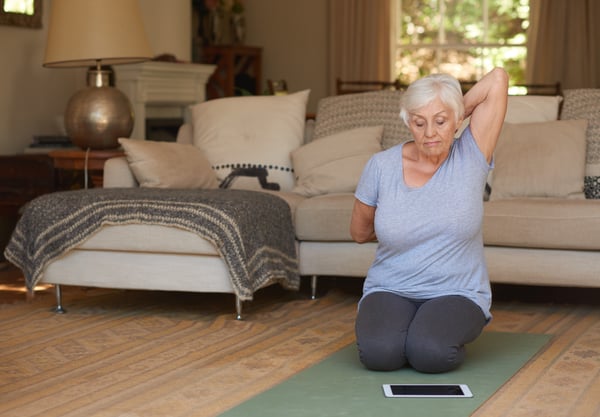Social isolation and loneliness are often overlooked as serious public health risks, even though a significant proportion of adults in the United States report feeling lonely. In a new 2020 report, approximately 25% of Americans who are 65 and over are considered to be socially isolated. Vulnerable patients especially, such as the elderly, are prone to social isolation and loneliness due to living alone or because of the loss of loved ones. According to the CDC, social isolation and loneliness put older adults at risk for dementia and other serious medical conditions.
Social Distancing Progressing to Social Isolation
COVID-19 restrictions have forced individuals to limit their socialization to only within those in their household to limit transmission of the virus. This rings especially true for the elderly and other vulnerable patient populations, as extra precautions are not only advised but necessary to prevent catching the potentially fatal virus. With physical symptoms of this virus at the forefront, the psychological impact is often overlooked.
While social isolation can lead to feelings of loneliness and dejection, it can also affect individuals physically causing stomach pain and headaches. The elderly population is more prone to elevated rates of loneliness as a direct consequence of social isolation.
Telehealth Makes a Concrete Difference
To combat the challenges and consequences of social isolation, telehealth has proven to serve as a viable option. Telehealth can be utilized to mitigate and offset the negative outcomes that often stem from increased feelings of loneliness and depression. Telehealth services are able to provide the patient with the support they need to stay healthy during a time of heightened anxiety, paranoia, and isolation. Telehealth can also incorporate the caregiver or other family members into the patients’ care plan, a benefit that contributes to reducing feelings of loneliness and isolation. As the pandemic continues, clinicians can keep vulnerable populations socially engaged while decreasing their chances of worsening their medical conditions.
In a 2020 study, conducted by Bohan Farrell at the University of San Diego, researchers introduced weekly telehealth visits to reduce loneliness and depression among patients living in a senior living facility for three months. Approximately 80% of patients had a decrease in depression, and 60% of patients showed a decrease in loneliness over the three month period as a result of the weekly telehealth visits.
Scheduling Social Activities and Check-ins
New telehealth flexibility that has emerged as a result of the COVID-19 pandemic has linked older patients to social activities to reduce feelings of loneliness and depression.
In a study from May 2020, telehealth groups were used to combat loneliness in older adults who were isolated due to the pandemic. Patients in the telehealth group were directed to scheduled Zoom calls, narrative writing sessions, a variety of arts and crafts, and physical training exercises that were available on-demand for older adults to enjoy at their own convenience. Guest speakers were brought in via video to substitute creative pursuits many can no longer partake in as a result of social distancing. At-home projects were also developed and demonstrated to be available to the patient and caregiver. As a result of the intentional, scheduled social interactions, patients reported higher levels of patient satisfaction.

Moving Forward
Clinicians can work with patients to help them understand that the social components of care are just as important as the medical components. By providing a structured solution to prevent social isolation, clinicians and caregivers can ensure patients are connected with loved ones and peers.
Loneliness, especially during old age, continues to remain a serious consequence of social isolation that has the potential to severely affect the physical wellbeing of patients worldwide. In the midst of a global pandemic, anxieties are exacerbated as many fear for their safety and health of themselves and loved ones. Telehealth can keep patients on track to remain physically healthy while also serving as a valuable resource for all patients to engage socially across the care continuum.
